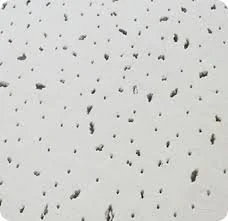- Afrikaans
- Albanian
- Amharic
- Arabic
- Armenian
- Azerbaijani
- Basque
- Belarusian
- Bengali
- Bosnian
- Bulgarian
- Catalan
- Cebuano
- Corsican
- Croatian
- Czech
- Danish
- Dutch
- English
- Esperanto
- Estonian
- French
- German
- Greek
- Hindi
- Indonesian
- irish
- Italian
- Japanese
- Korean
- Lao
- Malay
- Myanmar
- Norwegian
- Norwegian
- Polish
- Portuguese
- Romanian
- Russian
- Serbian
- Spanish
- Swedish
- Thai
- Turkish
- Ukrainian
- Uzbek
- Vietnamese
Ноя . 29, 2024 18:26 Back to list
main tee ceiling grid
Main Tee Ceiling Grid An Overview
The main tee ceiling grid is a critical component of modern building design, primarily used in suspended ceiling systems. This infrastructure not only provides a structural support system for ceiling tiles but also plays a pivotal role in the overall aesthetics and acoustics of a space. In this article, we will explore the various aspects of the main tee ceiling grid, including its components, installation procedures, and advantages, as well as its applications in different environments.
Components of the Main Tee Ceiling Grid
At its core, the main tee ceiling grid consists of several key elements. The primary components include
1. Main Tees These are the long, horizontal metal beams that run across the ceiling. They are typically spaced at intervals of 4 feet apart and provide the main structural support for the ceiling tiles.
2. Cross Tees These shorter metal sections connect the main tees, forming a grid structure. They are usually arranged in a perpendicular fashion to create a framework that supports the ceiling tiles.
3. Wall Angles Installed around the perimeter of the room, wall angles support the edges of the main and cross tees. They help ensure a level ceiling and provide a finished look to the grid system.
4. Suspension Rods These are used to hang the grid system from the building's structure above, maintaining the height and level of the ceiling grid.
5. Ceiling Tiles While not a component of the grid itself, the ceiling tiles serve as the visible surface of the suspended ceiling. They can be made from various materials, including mineral fiber, metal, or gypsum, and often come in different designs and finishes.
Installation Procedures
Installing a main tee ceiling grid involves several methodical steps
1. Preparation Before installation, it is essential to assess the space and plan the layout of the grid. Measurements should be taken to determine the positioning of main and cross tees, accounting for the size of the ceiling tiles.
2. Installing Wall Angles Begin by installing wall angles around the perimeter of the room using appropriate fasteners. These angles should be level to ensure a consistent grid structure.
3. Hanging Main Tees Secure suspension rods to the building structure and attach them to the main tees. The main tees should be placed at the prepared intervals, ensuring they remain level with one another.
4. Adding Cross Tees Once the main tees are in place, insert the cross tees perpendicularly between them to complete the grid framework. Ensure that all tees are locked into place and secure.
main tee ceiling grid

5. Installing Ceiling Tiles Finally, insert the ceiling tiles into the grid. Make sure all tiles are properly aligned and fit snugly into their respective positions.
Advantages of the Main Tee Ceiling Grid
The main tee ceiling grid offers numerous advantages for both residential and commercial applications
1. Versatility The grid system can support various ceiling tile materials, allowing for customization based on aesthetic and acoustic needs.
2. Ease of Access Suspended ceilings provide easy access to plumbing, electrical wiring, and HVAC systems above the tiles, facilitating maintenance and repairs.
3. Acoustic Control Many ceiling tiles are designed to absorb sound, improving the acoustics of open spaces and providing a quieter environment.
4. Aesthetic Appeal The grid system can enhance the overall design of a space, allowing for a modern and polished look.
5. Energy Efficiency Suspended ceilings can improve energy efficiency by creating a barrier that helps with insulation and temperature regulation.
Applications of Main Tee Ceiling Grids
Main tee ceiling grids are used in a variety of environments, including
- Commercial Spaces Offices, retail stores, and educational institutions frequently utilize suspended ceilings for their practicality and aesthetic benefits.
- Healthcare Facilities Hospitals and clinics often implement these systems due to their accessibility and ability to incorporate specialized acoustic and hygienic tiles.
- Residential Homes Many homeowners choose suspended ceilings in basements or home theaters to enhance acoustics and create a finished look.
In conclusion, the main tee ceiling grid is an integral part of contemporary ceiling design, offering a blend of functionality and style. Its versatility, ease of maintenance, and aesthetic appeal make it a popular choice in various settings, transforming spaces while supporting essential building systems above. Whether you are renovating an existing space or designing a new one, considering a main tee ceiling grid can greatly enhance both utility and design.
-
Transform Interiors with PVC Gypsum Ceiling: A Stylish, Durable, and Moisture-Resistant SolutionNewsMay.19,2025
-
The Smart Interior Upgrade: Discover the Durability and Versatility of Gypsum Ceiling Access Panel SolutionsNewsMay.19,2025
-
The Smart Choice for Interior Design: Discover the Value of PVC Gypsum Ceiling SolutionsNewsMay.19,2025
-
Mineral Fiber Ceiling Tiles: The Smart Blend of Performance and AestheticsNewsMay.19,2025
-
Mineral Fiber Ceiling Tiles: The Superior Choice Over Gypsum for Sound and Fire SafetyNewsMay.19,2025
-
Mineral Fiber Ceiling Tiles: Eco-Friendly Strength and Style for Every CeilingNewsMay.19,2025







